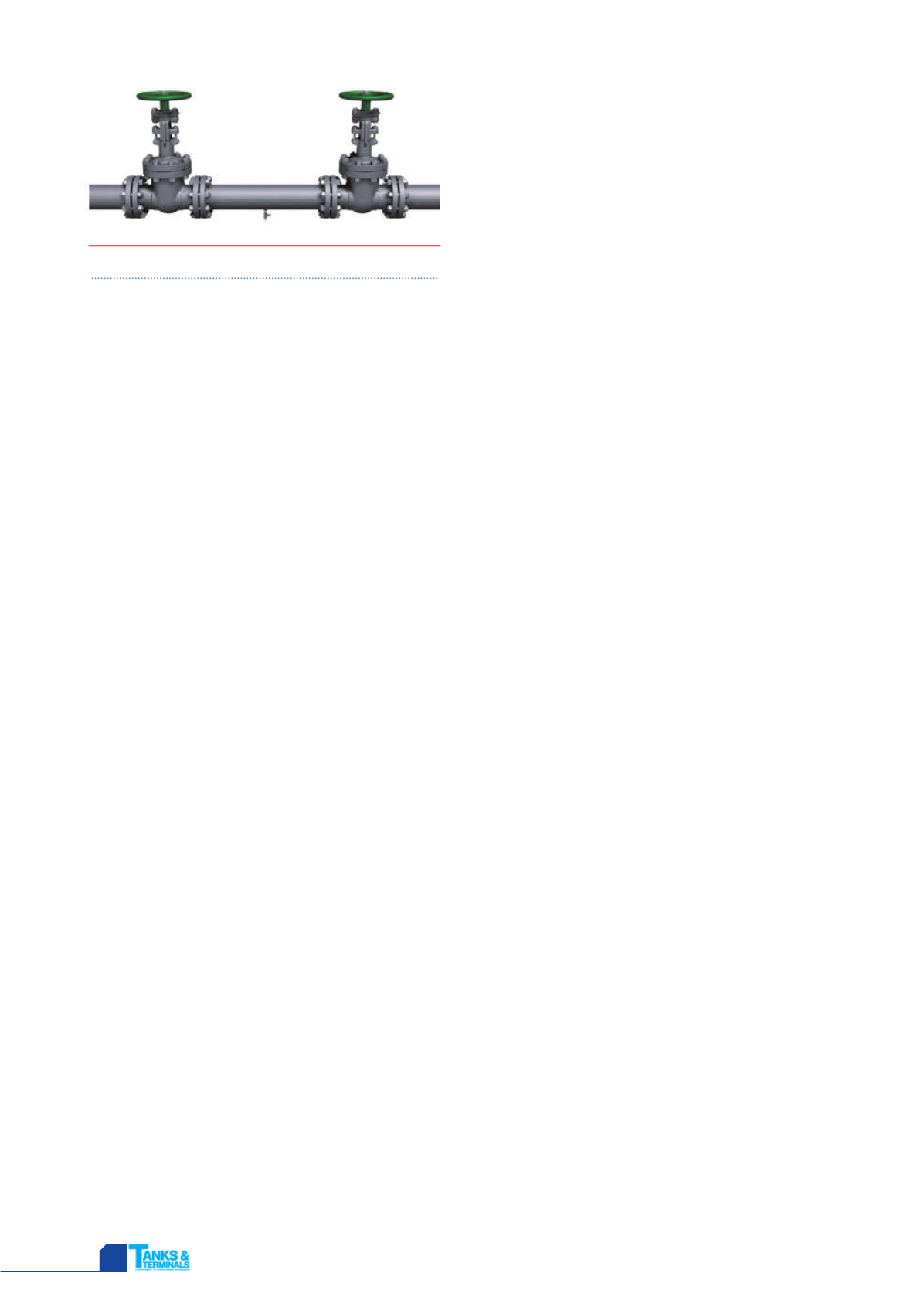
HYDROCARBON
ENGINEERING
50
requirements is a ‘double block and bleed’ (DBB) plug valve.
This article will focus on DBB plug valve tank and terminal
application benefits, valve selection criteria, and valve
feature solutions to address total cost of ownership.
DBB plug valve features provide terminal operators
with peace of mind. The mechanical wedge action of a
DBB plug valve compresses the upstream and downstream
seals firmly against the valve body without relying on line
pressure. Conversely, when opening a DBB plug valve, the
seating segments are retracted laterally away from the
valve body prior to the quarter turn, opening without seat
abrasion. The elastomeric seals are permanently bonded
into the seating segment substrates, which are mounted
on a central plug. Therefore, in the open position, the slip
seals are completely out of the process flow. The
mechanical sealing and elastomeric seal technology makes
DBB plug valves ideal for low pressure liquid applications
where drop tight isolation is a must.
DBB plug valve applications
Multi product manifold
DBB plug valves are typically designed for busy
manifolds that must be operated frequently, switching
from product to product. Whether the valves are
manually operated or utilise an actuator to cycle, DBB
plug valves can be trusted to seal drop tight, every time
to help prevent the expensive consequences of cross
contaminating products. Liquids that move through
pipeline manifolds can be reliably segregated by
provable, zero eak API 6D DBB plug valves.
Tank storage isolation
In liquid tank storage applications, there is a risk of
contamination and loss of volume unless the tank
isolation valves can be checked for zero leakage. The
use of line blinds for segregation involves a long, costly,
and perhaps hazardous operation of drain down,
lockout, and tag out. Some valve designs leave
operators vulnerable to excessive loss of product from
the open bleed. DBB plug valves offer simple, provable,
tank side isolation while ensuring valve integrity.
Metering and custody transfer
Due to the constant inbound and outbound transfer of
client product, accurate flowmeters are the life line of
tank and terminal application integrity. Pipeline
flowmeters require calibration to verify their accuracy.
During meter calibration (bidirectional proving) every
closed valve in the meter system must seal drop tight.
Even a small leak will cause errors in the meter
calibration process. In this case, an incorrect meter
factor will persist until the next proving operation. An
incorrect flow measurement can cost huge sums of
money due to product loss. DBB plug valves in the
meter station can be quickly and locally verified to be
holding a leak tight seal to help ensure accurate meter
calibration.
Loading and unloading
Product loading and unloading, whether on land or at
sea, may require hundreds of open/close strokes every
day. The valves in this system typically operate against
full pump pressure on every stroke, and they must close
every time without leakage. Safety and environmental
concerns demand that product remain totally contained
within the pipe, yet the valves must operate quickly and
easily.
DBB features
Functionality
Seal abrasion is common in ball valves and gate valves.
In most cases, the seats are in constant contact with the
ball or gate every time the valve cycles, leaving the
valves vulnerable to foreign material lodging between
the seats and ball or gate. This foreign material may
damage the seat or score the ball or gate and the
components will need repairing or replacing. DBB plug
valve operation incorporates a no abrasion lift and turn
design. The body bore is cylindrical, the plug is tapered,
and the seating segments are attached to the plug by a
male/female dovetail. The first action in the opening
operation is to lift the plug. This action will pull the
plug upward, retracting the seating segments laterally
away from the body. After the seating segments are
retracted from the body the quarter turn action will
commence into the full open position. In the full open
position, the seating segments are protected and are
completely out of the flow.
In the closed positon, the plug is pushed inward
which wedges the seating segments into the body bore.
The resilient seals in the seating segments are
compressed for a primary seal. In addition, a metal to
metal secondary seal is formed from the slip substrate
and body bore. The seal is produced from a low torque
mechanical means, therefore pipeline pressure is not
needed to assist in producing a positive bubble tight
seal. This feature is an advantage where low pressure
sealing is a must, such as in a tank and terminal
application.
Operation and actuation
All DBB plug valve operation incorporates a lift and quarter
turn sequence during the opening cycle. There are three
different methods depending on the design.
n
Lift and Turn: This design incorporates a complete
vertical lift of the plug to retract the seats prior to
commencing with the quarter turn opening action.
Figure 1.
Traditional DBB system.


